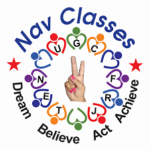‘NIPUN Bharat Mission’
- On July 5, 2021, the Ministry of Education’s Department of School Education and Literacy launched the National Initiative for Proficiency in Reading with Understanding and Numeracy (NIPUN Bharat). Ramesh Pokhriyal ‘Nishank’ launched it virtually.
- By 2026-27, every child will have attained the desired learning competencies in reading, writing, and numeracy by the end of Grade 3.
- This initiative will be a component of the Samagra Shiksha school education programme.
Implemented by:
The Union government’s school education department will implement the NIPUN Bharat initiative. A five-tier implementation mechanism will be established at the national, state, district, block, and school levels across all states and Union territories in order to implement it.
The reason behind the ‘NIPUN Bharat Mission’
In Indian schools, foundational learning has been a shortcoming. According to the findings of the Annual Status of Education Report (Aser), the majority of Indian pupils pursuing primary education in schools have been unable to read, understand, or perform basic arithmetic for several years. As a result, this initiative was created to address the problem. This programme is in accordance with the new education policy.
‘निपुन भारत मिशन’
5 जुलाई, 2021 को शिक्षा मंत्रालय के स्कूली शिक्षा और साक्षरता विभाग ने नेशनल इनिशिएटिव फॉर प्रोफिशिएंसी इन पठन विद अंडरस्टैंडिंग एंड न्यूमेरसी (NIPUN Bharat) की शुरुआत की। रमेश पोखरियाल ‘निशंक’ ने इसे वर्चुअली लॉन्च किया।
२०२६-२७ तक, प्रत्येक बच्चा कक्षा ३ के अंत तक पढ़ने, लिखने और अंकगणित में वांछित सीखने की योग्यता प्राप्त कर लेगा।
यह पहल समग्र शिक्षा स्कूल शिक्षा कार्यक्रम का एक घटक होगा।
द्वारा कार्यान्वित:
केंद्र सरकार का स्कूल शिक्षा विभाग NIPUN भारत पहल को लागू करेगा। इसे लागू करने के लिए सभी राज्यों और केंद्र शासित प्रदेशों में राष्ट्रीय, राज्य, जिला, ब्लॉक और स्कूल स्तर पर एक पांच स्तरीय कार्यान्वयन तंत्र स्थापित किया जाएगा।
‘निपुन भारत मिशन’ के पीछे का कारण
भारतीय विद्यालयों में आधारभूत शिक्षा की कमी रही है। एनुअल स्टेटस ऑफ एजुकेशन रिपोर्ट (असर) के निष्कर्षों के अनुसार, स्कूलों में प्राथमिक शिक्षा प्राप्त करने वाले अधिकांश भारतीय छात्र कई वर्षों से बुनियादी अंकगणित को पढ़ने, समझने या प्रदर्शन करने में असमर्थ हैं। नतीजतन, यह पहल समस्या के समाधान के लिए बनाई गई थी। यह कार्यक्रम नई शिक्षा नीति के अनुरूप है।
ASER 2020 Findings
- In the four to eight year old age group, 25% of school-aged children lack age-appropriate cognitive and numeracy skills. As a result, there is a significant learning disadvantage at an early age.
- Only 4% of youngsters under the age of six can distinguish at least letters.
- Only 6% of the population can do Additions.
- Only 8% of Class II students can read a material from a class below them.
- Only 8% of Class III students can read texts written for students two levels below them.
असर 2020 निष्कर्ष
- चार से आठ वर्ष के आयु वर्ग में, 25% स्कूली बच्चों में आयु-उपयुक्त संज्ञानात्मक और संख्यात्मक कौशल की कमी होती है। नतीजतन, कम उम्र में एक महत्वपूर्ण सीखने का नुकसान होता है।
- छह साल से कम उम्र के केवल 4% युवा ही कम से कम अक्षरों में अंतर कर सकते हैं।
- केवल 6% जनसंख्या ही Addition कर सकती है।
- कक्षा II के केवल 8% छात्र अपने से नीचे की कक्षा की सामग्री पढ़ सकते हैं।
- कक्षा III के केवल 8% छात्र अपने नीचे के दो स्तरों के छात्रों के लिए लिखे गए पाठ पढ़ सकते हैं।
Samagra Shiksha Abhiyan
> From pre-nursery to Class 12, the Union Budget for 2018-19 proposes treating school education comprehensively and without segmentation.
> As a result, Samagra Shiksha – an encompassing programme for the school education sector spanning pre-school to class 12 – has been developed with the overarching goal of enhancing school effectiveness as evaluated by equal access to education and equitable learning results.
> It incorporates the former Sarva Shiksha Abhiyan (SSA), Rashtriya Madhyamik Shiksha Abhiyan (RMSA), and Teacher Education Schemes (TE).
समग्र शिक्षा अभियान
> प्री-नर्सरी से कक्षा 12 तक, 2018-19 के केंद्रीय बजट में स्कूली शिक्षा को व्यापक रूप से और बिना विभाजन के व्यवहार करने का प्रस्ताव है।
> परिणामस्वरूप, समग्र शिक्षा – पूर्व-विद्यालय से कक्षा 12 तक फैले स्कूली शिक्षा क्षेत्र के लिए एक समावेशी कार्यक्रम – शिक्षा तक समान पहुंच और समान सीखने के परिणामों द्वारा मूल्यांकन के अनुसार स्कूल प्रभावशीलता को बढ़ाने के व्यापक लक्ष्य के साथ विकसित किया गया है।
> इसमें पूर्व सर्व शिक्षा अभियान (SSA), राष्ट्रीय माध्यमिक शिक्षा अभियान (RMSA), और शिक्षक शिक्षा योजनाएँ (TE) शामिल हैं।






